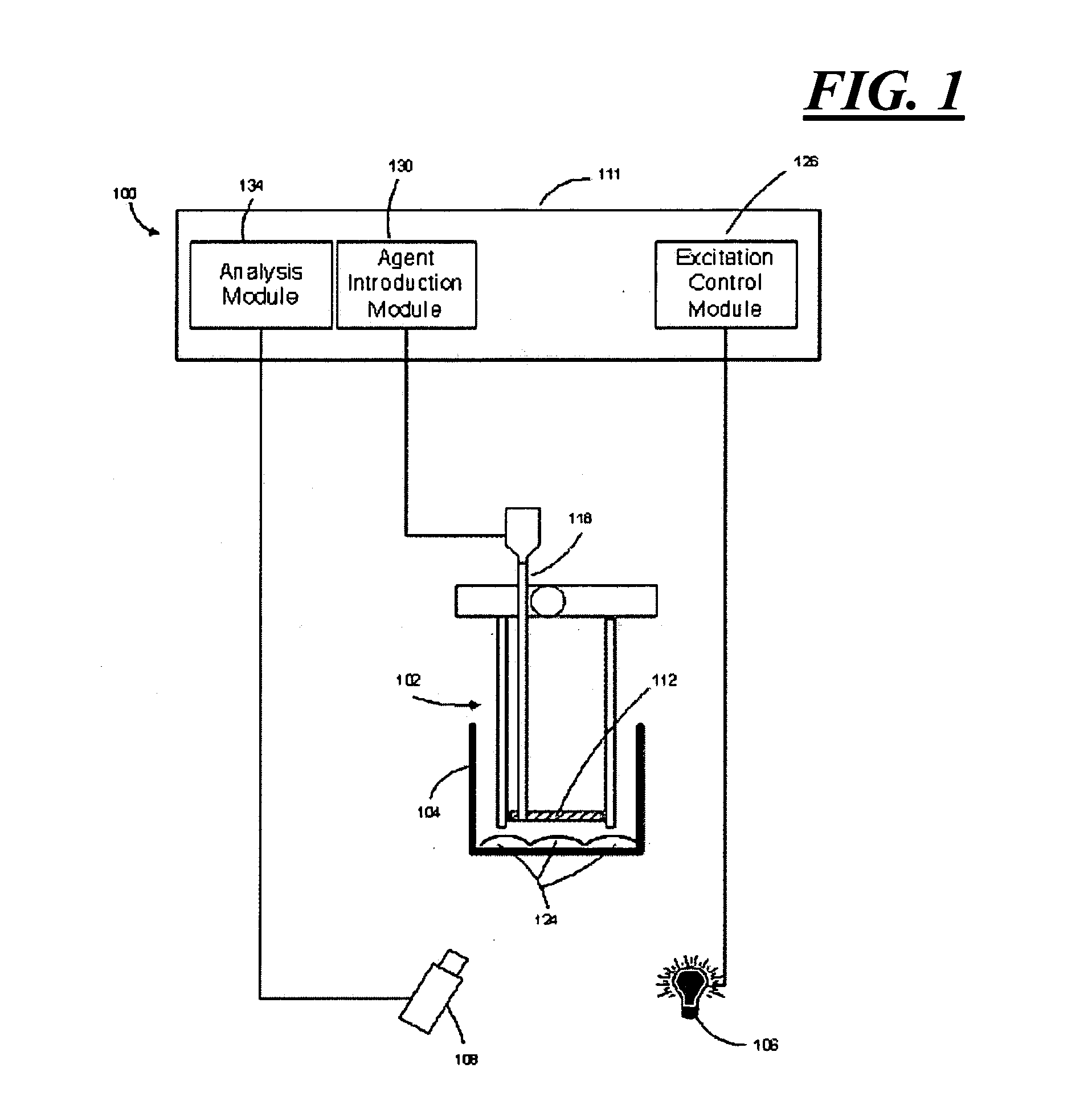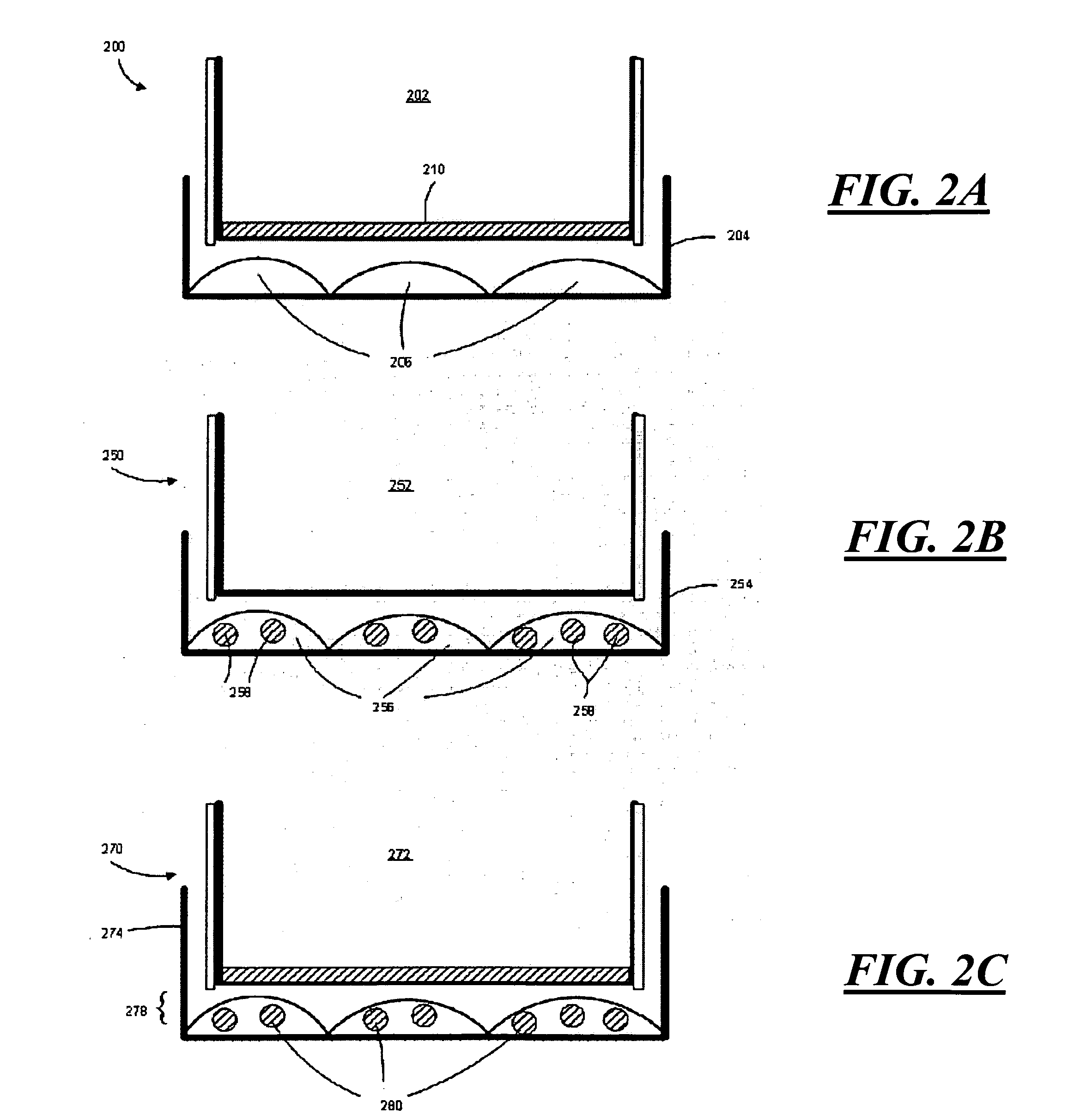Reaction sensing in living cells
a technology of living cells and sensing, applied in the field of living cell reaction sensing, can solve the problems of conventional approaches suffering from a number of deficiencies, their vulnerability to influence, and require potentially destructive modification or invasion of the cell
- Summary
- Abstract
- Description
- Claims
- Application Information
AI Technical Summary
Benefits of technology
Problems solved by technology
Method used
Image
Examples
Embodiment Construction
[0026]In brief overview, embodiments of the present invention provide systems, methods and devices for measuring cellular biomarkers. In exemplary embodiments, optically active polymer sensors are placed inside or outside a cell. Changes in fluorescence or absorbance indicate the ion concentrations and fluxes from the cell. The overall change in fluorescence or absorbance in response to a compound of interest provides a “fingerprint” (e.g., a spectrum) for that compound.
[0027]FIG. 1 is a schematic diagram of a cell assay system 100 according to an illustrative embodiment of the invention. The cell assay system 100 includes an optical ion sensor support 102, a biological sample holder 104, an excitation light source 106, a light sensor 108, and a computing device 111.
[0028]The optical ion sensor support 102 supports an optical ion sensor 112 for positioning in the biological sample holder 104. In various implementations, the optical ion sensor 112 is adhered to the optical ion sensor...
PUM
| Property | Measurement | Unit |
|---|---|---|
| size | aaaaa | aaaaa |
| total volume | aaaaa | aaaaa |
| total volume | aaaaa | aaaaa |
Abstract
Description
Claims
Application Information
 Login to View More
Login to View More - R&D
- Intellectual Property
- Life Sciences
- Materials
- Tech Scout
- Unparalleled Data Quality
- Higher Quality Content
- 60% Fewer Hallucinations
Browse by: Latest US Patents, China's latest patents, Technical Efficacy Thesaurus, Application Domain, Technology Topic, Popular Technical Reports.
© 2025 PatSnap. All rights reserved.Legal|Privacy policy|Modern Slavery Act Transparency Statement|Sitemap|About US| Contact US: help@patsnap.com



